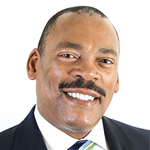Minimizing Litigation Risks In Skilled Nursing Care
Accountable clinical processes aligned with EHR workflow can boost risk management efforts.
Kevin Whitehurst
5/1/2017

Litigation in health care has been rising recently, with lawsuits against skilled nursing care centers at the top of the list. The reality of litigation can be attributed to high expectations of quality care, public exposure of incidents, and regulations that empower the resident to receive care under their terms. Most providers are keenly aware of the impact these experiences have had on their operations.
Litigation Affects Everyone
Risk management is a priority for skilled nursing providers to avoid lawsuits related to injuries, accidents, or fatalities that could otherwise be prevented. Yet, nursing centers with the highest quality of care are still at risk for litigation.
A 2011 study in the New England Journal of Medicine found that nursing centers with the best deficiency records are only slightly less likely to be sued than nursing centers with the worst deficiency records. The liability risk can be greater without accountable clinical processes aligned with electronic health record (EHR) workflow.
This landscape demands that providers proactively position themselves for the best outcome should a lawsuit occur. Technology in the form of an EHR is one piece to focus on. The ability for providers to manage accountable processes is another.
Automate Workflows
Long term and post-acute care professionals are innately skilled to provide high-quality care with dignity and respect for the elderly. For some, technology can be more of a foreign concept. When it comes to risk management, however, an automated workflow should be considered an essential part. Without it, providers may experience more disputes over quality of care and costly legal expenses to validate underlying causes of unfortunate incidents.
There are three critical activities to support the development of an automated workflow:
1. Define accountable clinical processes;
2. Take advantage of training opportunities; and
3. Access and understand the data.
Define Accountable Clinical Processes
Before the days of automation, manual clinical processes were developed to ensure compliance. Eventually, providers realized that this is not only inefficient, but it allows more room for error.
Having the right policies and procedures is essential to everyday care and activities in skilled nursing facilities. Seamlessly automating them with technology is critical.
A good practice for nursing leadership is to map out accountable processes and workflows. Staff should be engaged in the development of the processes and educated on what the policies are, as well as how they will be measured. The operative word is “accountable,” and this is emphasis the leadership team should place on the processes.
Well-defined processes that are aligned with EHRs and ingrained in the staff is the first step to positioning the facility for success in this litigation era.
Leverage EHR Vendor Relationship
Skilled nursing facilities can leverage their EHR vendor relationships for training with a focus on compliance. This can be accomplished in many ways, depending on the facility’s EHR partner, but the concept of in-person workshops should not be taken lightly. Spending time with key stakeholders who support the facility’s accountable processes is one of the best investments a provider can make.
Follow these tips to best leverage an EHR vendor:
- Request a compliance workshop with the company’s technology partner.
- Inquire and understand the background and skillset of the resources you are assigned.
- Speak to providers that work with the EHR vendor to prevent or minimize risk.
- Educate staff and technology partner(s) on the facility’s accountable processes.
- Allocate time for appropriate staff to attend workshops and training sessions.
- Budget for a compliance consultation with the EHR vendor at least annually.
With each workshop and/or training session, document the results. Compliance training documentation is key to helping overcome litigation hurdles.
Gain Access to the Data
Once workflows are automated in the EHR, the focus should be on analyzing the outcomes. Whether through graphs, charts, or other formatted reports, ensure there is an easily consumable way to interpret compliance data.
Monitor for compliance issues in real time or on a scheduled basis. Compliance data can be revealed in many forms, and it is important to identify the data that are most crucial.
A frequent data point may be alerts for drug-to-drug interactions and immunization reminders. Another example may be nursing interventions for care planning or physician-specific orders for care management. It is helpful to review structured data captured from assessment tools such as the Braden scale.
There is a significant difference between reports and analytics: Reports tell the provider what is happening; analytics explain why it is happening and what can be done about it. The difference in these tools can be a matter of risk awareness and risk management.
Collaboration and Engagement Key
The prevalence of litigation in skilled nursing centers requires a focus on well-defined processes and effective technology. Combining the two takes collaboration and engagement of facility staff, along with the EHR vendor.
For those up for the challenge, heed this advice: Do not lose sight of the mission, do not stumble through antiquated technology, and do not jeopardize the facility’s margins for accepting the status quo. Implement accountable processes, leverage technology, and provide the best care.